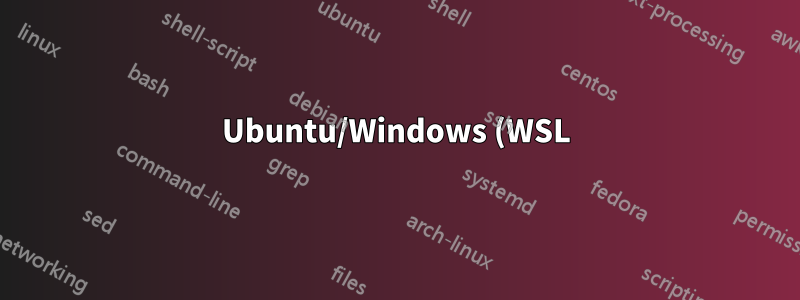%20%E4%B8%AD%E7%9A%84%E3%80%8C%E5%9E%83%E5%9C%BE%E7%AE%B1%E3%80%8D%E8%B3%87%E6%96%99%E5%A4%BE%E5%9C%A8%E5%93%AA%E8%A3%A1%EF%BC%9F.png)
我在用Win10 中的 Ubuntu,但即使我使用命令,我也找不到垃圾資料夾
mv ~/.Trash/foo ~/
mv: cannot stat '/home/man/.Trash/foo': No such file or directory
我的問題是如何在 Ubuntu/Win10 中開啟垃圾資料夾?
答案1
垃圾位於~/.local/share/Trash,至少在 Ubuntu 中是如此。~/.local– 或者更準確地說,~/.local/share– 是 XDG 相容程式根據以下方式儲存使用者資料(例如字體、郵件訊息)的位置:XDG 基本目錄規範。
WSL 上的 Ubuntu 只為您提供預設沒有終端和 GUI。
每當從 Ubuntu 中的圖形檔案管理器(如 Nautilus 或 Thunar)中刪除檔案時,它們實際上會被移至~/.local/share/Trash.文件通常是rm從終端刪除的,不移動將它們放入垃圾箱文件夾。
因此,除非您使用 Linux 圖形檔案管理器,否則 WSL 中沒有垃圾資料夾。
答案2
我的 WSL (Ubuntu-20.04) 沒有 ~/.local/share/Trash 資料夾。我按照這裡的說明進行操作(https://github.com/sindresorhus/trash)並安裝
trash並trash-cli使用npm.
像這樣的事情現在就可以了!
[username@host]$ tldr trash
trash
A CLI for managing your trashcan / recycling bin.More information: https://github.com/andreafrancia/trash-cli.
- Delete a file (send to trash):
trash {{path/to/file}}
- List files in trash:
trash-list
- Restore file from trash:
trash-restore
- Empty trash:
trash-empty
- Empty trash, keeping files trashed less than {{10}} days ago:
trash-empty {{10}}
- Remove all files named 'foo' from the trash:
trash-rm foo
- Remove all files with a given original location:
trash-rm {{/absolute/path/to/file_or_directory}}
提示:https://github.com/tldr-pages/tldr是一個非常酷的工具,可以獲取手冊頁通常沒有的命令的實際範例。
答案3
gioUbuntu 中的「垃圾箱」資料夾通常由(Gnome IO) 和 GVfs(Gnome 虛擬檔案系統)提供。雖然像 Nautilus 這樣的應用程式作用於 GVfs 來存取垃圾,但也可以使用命令列工具直接從 WSL 或 Ubuntu Server 上的命令列完成,無需任何 GUI gio。
它做但是,需要 D-Bus 使用者會話,該會話不會在 WSL 下自動執行,因為 (a) 沒有 Systemd,且 (b) 沒有啟動使用者服務的「登入」概念。
雖然gioWSL Ubuntu 發行版中預設安裝了 D-bus 和 D-bus,但您確實需要添加該gvfs軟體包(至少在 WSL 上):
sudo apt install gvfs
然後您需要啟動具有 D-Bus 支援的 shell。這可以透過多種方式完成,但也許最好的選擇是將 WSL 啟動命令(在 Windows 終端機或其他地方)更改為:
wsl ~ -e dbus-launch bash # Or your preferred shell
此時,您可以從 WSL 命令列使用垃圾箱。例子:
touch "a test file"
gio trash "a test file"
gio list Trash://
ls -lah ~/.local/share/Trash/files
gio trash --empty
gio list Trash://
ls -lah ~/.local/share/Trash/files


